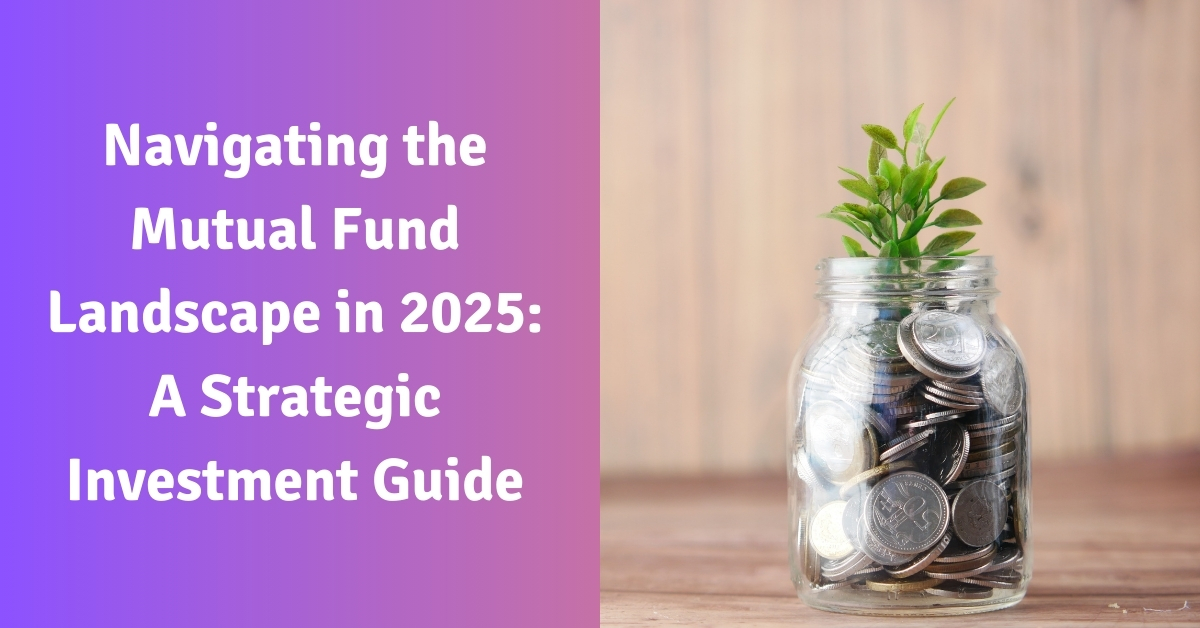Navigating the Mutual Fund Landscape in 2025: A Strategic Investment Guide

The year 2025 presents investors with fresh challenges and opportunities in the mutual fund market. As the financial environment shifts, understanding the right strategies for navigating this landscape is essential for securing growth and minimizing risks. This guide offers a strategic overview of the mutual fund space for 2025, focusing on key categories, portfolio balancing, and disciplined investment strategies.
The Rising Tide of Retail Investment
The mutual fund industry saw unprecedented retail investor participation in 2024, with SIP inflows climbing from ₹17,610 crore in December 2023 to ₹25,320 crore by November 2024. This wave of investment brought nearly 10 million new participants into the market, significantly changing its dynamics. However, while these numbers are impressive, the golden rule remains: past performance doesn’t guarantee future success. Investors must rethink their strategies and position themselves smartly to achieve long-term growth in 2025.
The Portfolio Rebalancing Imperative
Moving Beyond Momentum
A significant trend observed in 2024 was the overexposure to thematic, sectoral, and momentum-driven funds. While these funds can yield high returns during booming markets, they often come with higher volatility. Over-reliance on such funds can expose portfolios to unnecessary risk, making it crucial to rebalance and create a more resilient strategy for 2025.
The key to long-term growth lies in diversifying your portfolio with stable, consistent performers. While there’s room for dynamic investments, balancing them with less volatile options is vital for success.
Essential Fund Categories for 2025
Large-cap Funds: A Strong Foundation
Often overshadowed by higher-risk funds, large-cap funds deserve a more prominent place in your portfolio. These funds focus on India’s top 100 companies by market capitalization and offer lower volatility, making them suitable for conservative investors. They might not promise the highest returns, but they provide consistent performance and are resilient during market downturns.
A notable player in this category is the Axis Growth Opportunities Fund, which offers exposure to blue-chip companies while blending large and mid-cap investments for optimal balance.
Flexi-cap Funds: Adaptability at Its Best
Flexi-cap funds are the true chameleons of the mutual fund world, offering the flexibility to invest across large-cap, mid-cap, and small-cap stocks. Their adaptability makes them especially valuable in uncertain markets. By dynamically adjusting their allocation, these funds give investors professional market timing and sector rotation.
Top picks in this category include Whiteoak Flexi Cap Fund, Helios Flexi Cap Fund, and Edelweiss Flexi Cap Fund, all known for their active management and market responsiveness.
Aggressive Hybrid Funds: Balance and Growth
For those seeking growth with a moderate level of risk, aggressive hybrid funds are a solid choice. These funds typically allocate 65-80% of their assets to equities, with the rest in debt instruments. This balance provides investors with the potential for growth without excessive volatility. The Sundaram Aggressive Hybrid Fund and Bank of India Mid & Small Cap Equity & Debt Fund are strong performers in this space, offering regular rebalancing to maintain the ideal asset mix.
Crafting Your 2025 Portfolio
Building a Core of Stability
The foundation of a successful 2025 portfolio should focus on stability and growth. A solid portfolio composition might look like this:
- 50-60% in large-cap and flexi-cap funds, which provide a mix of stability and adaptability
- 20-30% in aggressive hybrid funds for balanced growth with a reduced risk profile
- 10-20% in thematic and sectoral funds for dynamic exposure to emerging market trends
Disciplined Investment Approach
In 2025, the secret to successful investing isn’t chasing trends but maintaining a disciplined approach. Key strategies include:
- Conducting regular portfolio reviews to ensure alignment with your goals
- Rebalancing your investments annually or biannually to mitigate risk
- Focusing on long-term wealth creation rather than short-term market movements
The mutual fund landscape in 2025 offers exciting opportunities for wealth creation, but a smart, balanced approach is essential. By building a diversified portfolio and maintaining investment discipline, you can secure steady growth while navigating market volatility.
Conclusion
As we move into 2025, the mutual fund landscape presents both opportunities and challenges for investors. The key to success in this evolving environment is maintaining a balanced and well-diversified portfolio that includes large-cap, flexi-cap, and hybrid funds while carefully managing exposure to higher-risk thematic and sectoral funds. By focusing on long-term wealth creation, regularly rebalancing your investments, and staying disciplined in your approach, you can navigate market volatility and position your portfolio for sustainable growth in the years to come. With the right strategies in place, 2025 could be a rewarding year for mutual fund investors.
FAQs
1. What is a large-cap mutual fund?
Ans- Large-cap funds invest in India’s top 100 companies by market capitalization, offering lower volatility and more consistent returns than mid or small-cap funds.
2. Why should I consider flexi-cap funds in 2025?
Ans- Flexi-cap funds are adaptable and can invest across market capitalizations, making them well-suited for unpredictable market conditions.
3. What are aggressive hybrid funds?
Ans- Aggressive hybrid funds invest primarily in equities but also include debt instruments, offering balanced growth with lower risk.
4. Should I avoid thematic and sectoral funds?
Ans- No, but thematic and sectoral funds should only represent a small portion of your portfolio (10-20%), as they tend to carry higher risk and volatility.
5. How often should I rebalance my mutual fund portfolio?
Ans- Rebalancing your portfolio once or twice a year helps ensure your investments remain aligned with your financial goals and risk tolerance.
6. What’s the benefit of large-cap funds over mid or small-cap funds?
Ans- Large-cap funds are more stable and less volatile, making them ideal for conservative investors or those seeking lower-risk investment options.
7. How do flexi-cap funds help manage market volatility?
Ans- Flexi-cap funds adjust their allocation based on market conditions, allowing them to reduce risk during downturns and capture growth during rallies.
8. What’s the role of debt in aggressive hybrid funds?
Ans- The debt portion in aggressive hybrid funds provides stability during volatile market periods, balancing out the higher risk associated with equity investments.
9. What are SIP inflows, and why are they important?
Ans- SIP inflows represent regular investments made through Systematic Investment Plans, which help ensure steady contributions to the mutual fund industry.
10. Can I invest in multiple types of mutual funds?
Ans- Yes, diversifying across different mutual fund categories helps balance risk and reward, ensuring a more resilient and adaptable portfolio.
Disclaimer: The information provided here is for educational and informational purposes only and should not be construed as financial, legal, or tax advice. Consult with a qualified professional before making any investment decisions. We do not accept any liability for errors or omissions in this information nor any direct, indirect, or consequential losses arising from its use.




